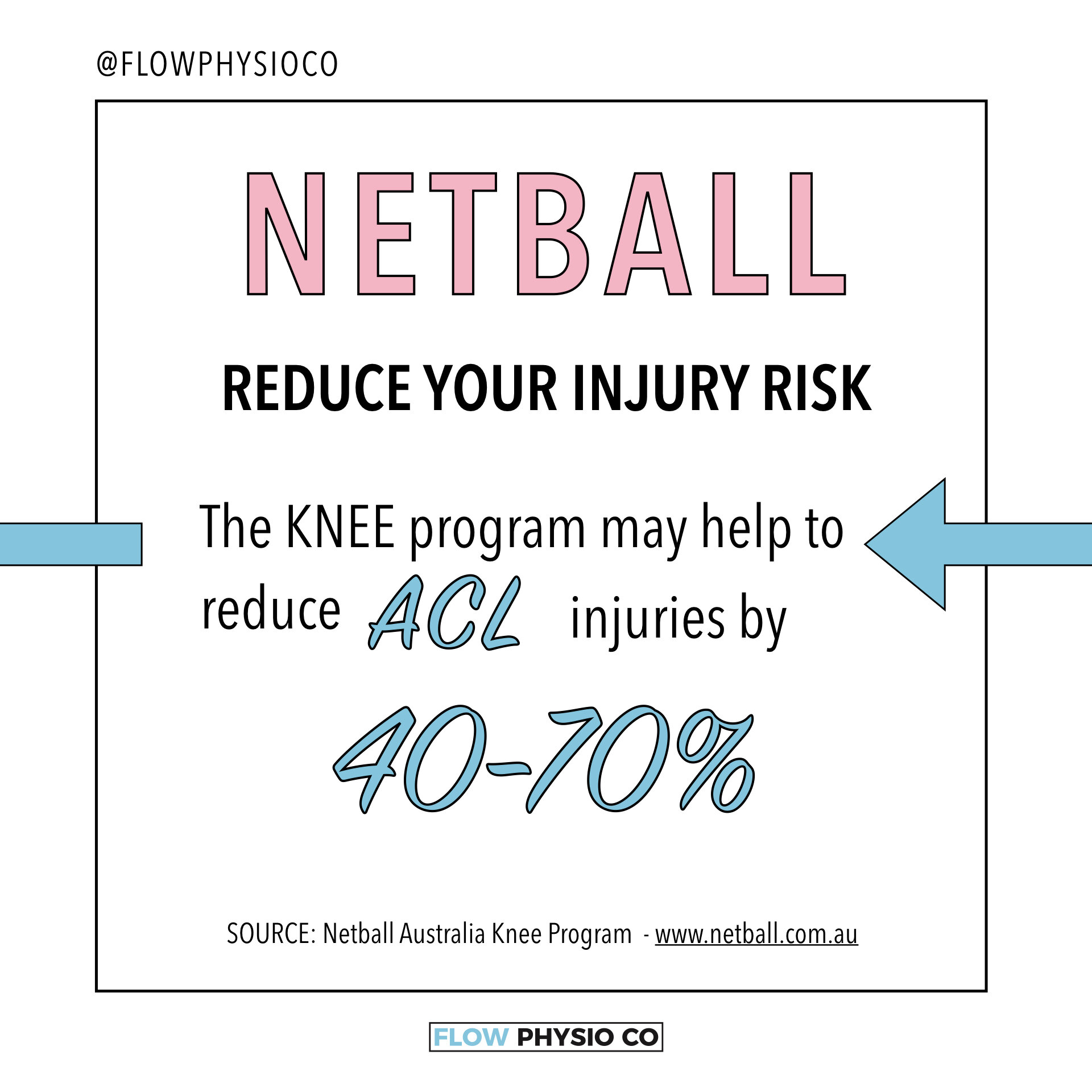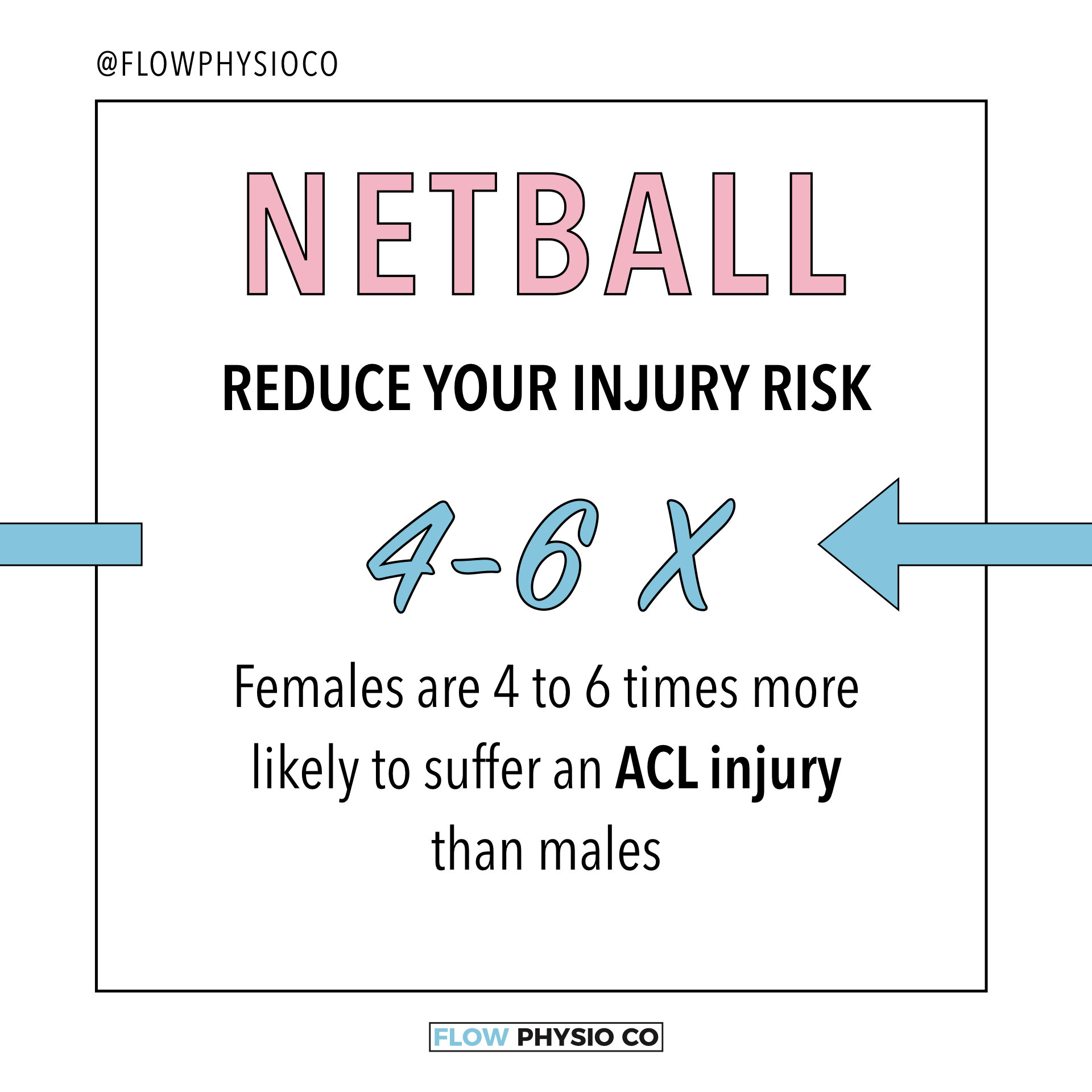Craig and Jason discuss their thoughts on Conor's fracture and the possible causes, Tommy Turbo's hamstring, the Quadrant of Doom for hamstring injuries and what you can be doing during the Sydney lockdown period to minimise injury.
Flow Know Episode 2 - Strength training to reduce injury risk in sport
Craig and Jason sat down this week to talk about why they place such a big emphasis on strength training for their clients and how they can help people bridge the gap to improve their function and performance in sport and life.
Source: Lauersen et al (2018) Strength training as superior, dose-dependent and safe prevention of acute and overuse sports injuries: a systematic review, qualitative analysis and meta-analysis
Netball Knee Program - Reducing injury and improving performance - Physio Sutherland
Joel is a Physiotherapist from Flow Physio Co Sutherland with a passion for helping sportspeople perform at their best. Today he talks through the Netball Australia KNEE Program for improving performance and reducing injury risk.
What is the Netball KNEE Program?
The Netball KNEE program is a court-side warm up to help players prepare to play, move efficiently and land safely. It was designed by Netball Australia and a bunch of experts from various fields for people of all levels.
The goal is to build strength and control of your body in short, sharp movements that are specific to netball. What we’ve seen it do is improve performance and reduce chance of injuries - because you’re stronger, faster and fitter!
Why do the Netball Knee Program?
Knees and ankles are the most common injuries in netballers and most of these injuries occur when landing. The Anterior Cruciate Ligament (ACL) represents roughly 1/3 of serious injuries reported in netballers every year.
The KNEE Program is based on injury prevention programs that have been proven effective in reducing lower limb injuries generally and specifically reducing ACL injuries from 40–70% (Netball Australia).
How can we implement it?
What we want to do at Flow is to provide an individualised exercise program for any netballer that comes into the clinic based on this program. We want to teach you this program to be able to use it as your warm up for training and games to reduce your injury risk and improve your performance on the court.
We would run you through a 1 on 1 assessment, looking at injury history and where you want to improve, then we will design a program individualised for you that you can complete in our group classes here in the clinic.
If you want to use this as a fitness session for you and a few team members, we can organise sessions just for you and your teammates. If you want to work individually on improving yourself, we are happy to work with that too!
Get in touch and we can chat about how it might work best for you!
WOMEN'S HEALTH PHYSIO - SAFELY RETURNING TO EXERCISE AFTER PREGNANCY
Although a lot of women are keen to get back their pre baby routine it is really important to make this return as safe as possible.
Whether you have had a caesarian or vaginal delivery we recommend you starting your pelvic floor exercises along with light walking as soon as you feel comfortable.
6 week check with your Women's Health Physio
At 6 weeks you will have a follow up appointment with your Obstetrician or GP, after this we recommend having a 6 week check up with a Women's Health Physiotherapist who will check the integrity of your pelvic floor. This is to make sure you can get a contraction, as some women's pelvic floor can be inhibited after birth and they can struggle to contact their pelvic floor muscles. It will also involve assessing the position of your pelvic organs to make sure there is no prolapse, checking for a abdominal separation and deep core contraction. Following this we will be able to safely prescribe a postnatal exercise program for you to begin.
What about returning to running or high intensity exercise?
Although every woman’s body recovers differently, we still recommend waiting a minimum of 12 weeks, as well as having no incontinence issues, no pain or no prolapse symptoms before participating in any outer abdominal exercises such as sit ups or any high intensity core work that increases your intra abdominal pressure. This intra abdominal pressures directly puts strain on your pelvic floor.
Running is another hight impact exercise that places strain through these muscles and we recommend before beginning to run that your have your pelvic floor assessed and pass a pelvic floor stress test.
Pelvic Organ Prolapse - Women’s Health Physio
Pelvic Organ Prolapse
Did you know?
One in two women who have had a baby will experience prolapse at some stage in their life, that’s why it is so important to have an understanding of what it is and the symptoms experienced with prolapse.
What is pelvic organ prolapse?
Pelvic organ prolapse is when one or more of the pelvic organs (bladder, uterus and bowel) slip down into the vagina causing a bulge or a heavy dragging feeling. Prolapse happens due to damage of the support structures of the pelvic floor including muscles, fascia or ligaments.
What are the symptoms?
Symptoms of prolapse include:
Sensation or heaviness/dragging/buldge in the vagina
Incomplete emptying of your bladder/bowels
Discomfort in the lower abdomen
Recurrent urinary tract infections
Sexual discomfort
Incontinence
Prevention and management strategies
The good news is there is lots that can be done to prevent or manage prolapse. The pelvic floor acts as a sling supporting the pelvic organs, therefore pelvic floor strength training is one of the treatment options that can prevent or help alleviate symptoms of prolapse.







